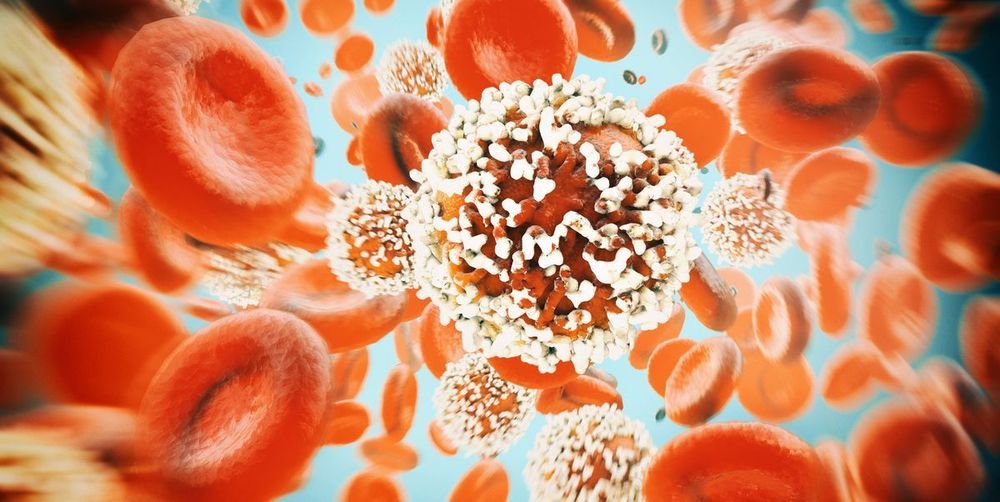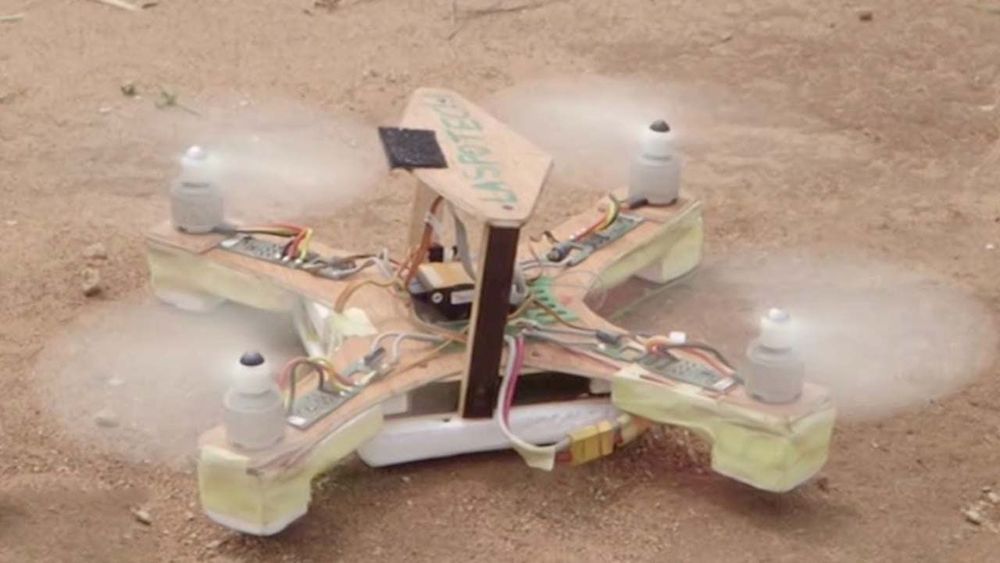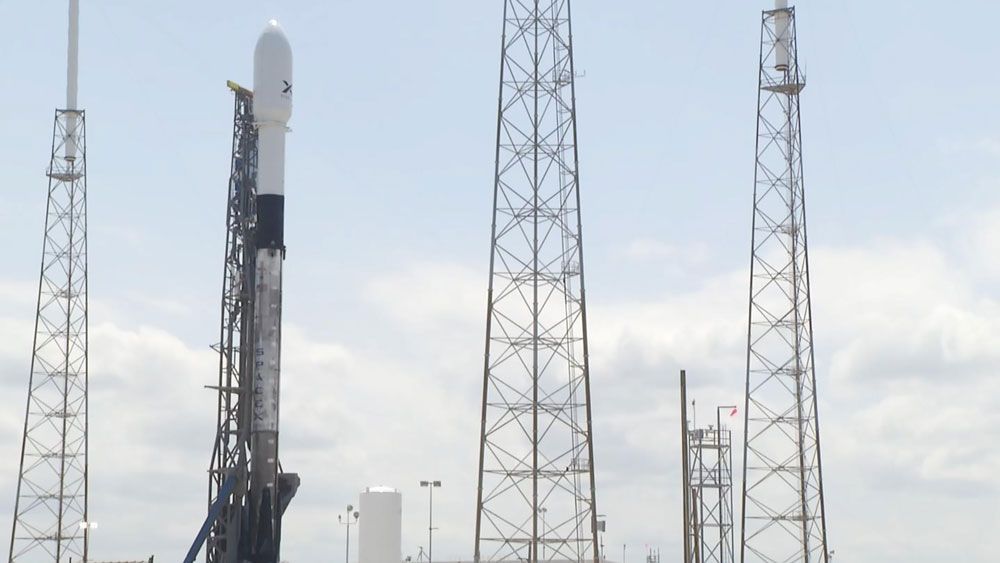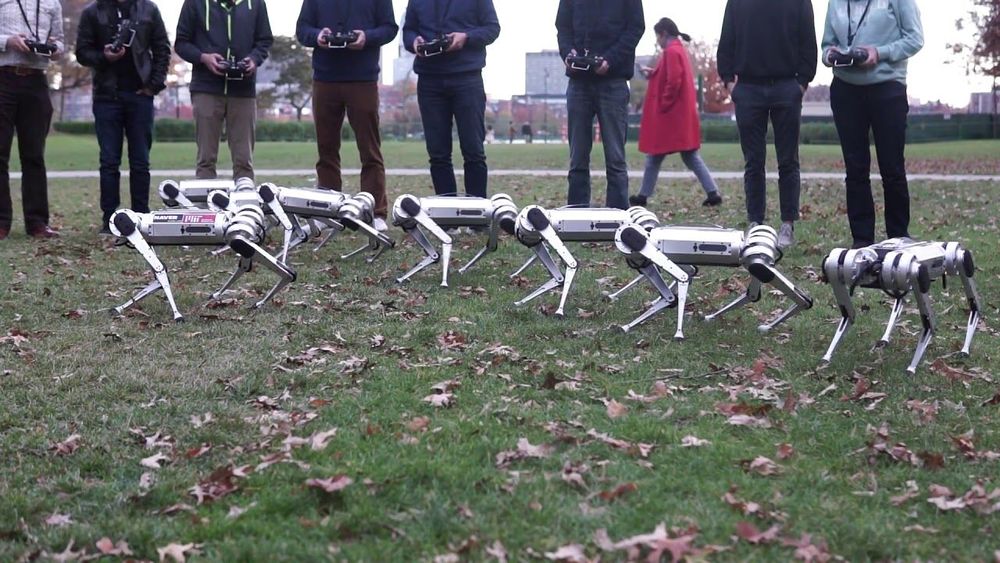After joining a Mayo Clinic trial, Lee Mercker is recovering well—thanks to a shot.
Physicists have watched a chain of 15 amino acids interfere with itself, in an experiment that paves the way for a new era of quantum biology.
David Opateyibo was 17 years old when he built Nigeria’s first locally-made drone in Lagos.
Opateyibo led a team of Lagos State Polytechnic students to produce the country’s first prototype of a drone, which authorities in Lagos hope to deploy for security surveillance.
The drone project is part of the training curriculum in the University with the aim of developing technology that will be at par with the rest of the world whilst empowering young people and providing job opportunities.
“What foundational values need to be in place for an ethical utilitronium shockwave?”
What foundational values need to be in place for an ethical utilitronium shockwave?
We discuss:
- (following on from a previous video) more on Nozick’s experience machines (see https://www.youtube.com/watch?v=CxBvNbuYud0).
- given that in each age there has been different conceptions of utopia, what would utopia be for a post-human superintelligence?
- classical utilitarian vs negative utilitarian approaches to the long term good of life in the universe.
- whether a perfect decision theory would be equal to negative utilitarianism.
- how much attention should we give to preferences in improving well-being beyond eliminating suffering?
- if one does believe in the objectivity of value should we be concerned about being damned in a local maximum of well-being?
- what is God’s utility function?
https://youtu.be/0uKNVVVdqrI #ethics #utilitarianism #futurology
Filmed inside the Melbourne Museum in Victoria, Australia.
David Pearce is interested in the use of biotechnology to abolish suffering throughout the living world: http://abolitionist.com
Each one weighs about 20 pounds (or nine kilograms), is powered by 12 electrical motors, and can reach speeds of around six miles per hour (or 2.5 meters per second). As you can see in the video, they’re all being steered manually using what look like RC controllers.
Speaking to IEEE Spectrum earlier this year, Sangbae Kim, director of MIT’s biomimetics lab, said the bots are being used to research various problems that require a bit of ruggedness and flexibility. Their modular design lets scientists swap in new parts if they break, and their tough build can survive crashes and bangs.
“Mini Cheetah is just about the perfect size. Twenty pounds (9 kilograms) is not too small but not so big that it’s dangerous or fragile,” said Sangbae. “We designed the machine to be able to absorb the impacts, jumping and landing and so on.”
Three Square Market was a test case, the first company in the US to offer implants to employees on a public stage. But the highly charged reaction, which linked the devices not only to pernicious surveillance but to a vision of tech-apocalypse, raised a question that Österlund is still grappling with: is the world ready for technology to get under the skin?
As implants grow more common, experts fear surveillance and exploitation of workers. Advocates say the concerns are irrational.
Elon Musk has revealed the official launch date for Tesla’s “Cyberpunk” Pickup Truck. According to the CEO, the upcoming vehicle would be released on November 21, 2019 at the SpaceX rocket factory in Hawthorne, CA.
Musk’s update formally ends a period of speculations that have long swept the electric car community with regards to the unveiling of the Tesla Pickup Truck. The CEO, after all, has praised the vehicle as one of his personal favorites. Yet, despite this, Tesla has been able to keep details of the Cybertruck secret, with zero sightings or spy shots of the vehicle to date.
ROCHESTER, Minn. — A Mayo Clinic study finds that applying artificial intelligence (AI) to a widely available, inexpensive test – the electrocardiogram (EKG) – results in a simple, affordable early indicator of asymptomatic left ventricular dysfunction, which is a precursor to heart failure. The research team found that the AI/EKG test accuracy compares favorably with other common screening tests, such as mammography for breast cancer. The findings were published in Nature Medicine.
Asymptomatic left ventricular dysfunction is characterized by the presence of a weak heart pump with a risk of overt heart failure. It affects 7 million Americans, and is associated with reduced quality of life and longevity. But asymptomatic left ventricular dysfunction is treatable when identified.









